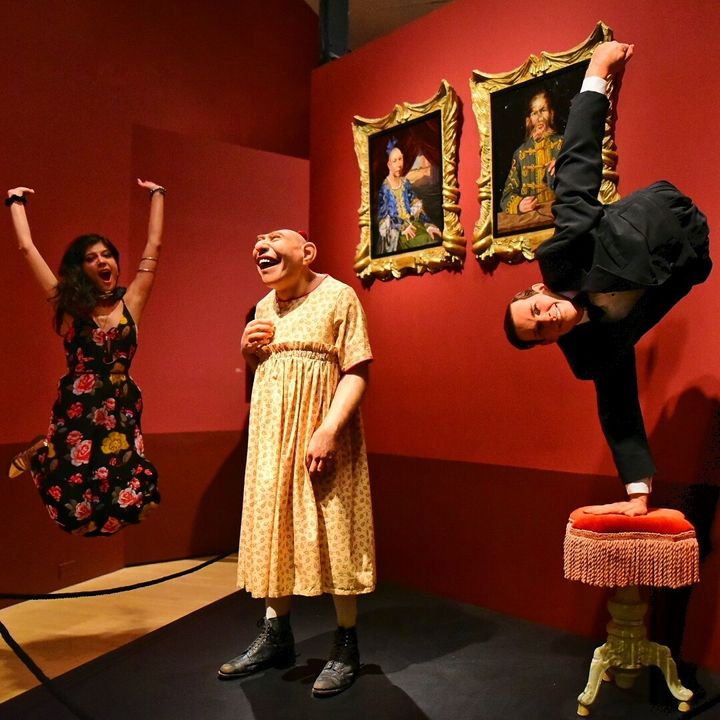
Dr. Paul Koudounaris is a little odd. But that’s perhaps what makes him the perfect gentleman to take a select few on a tour of LACMA’s latest exhibition, Guillermo del Toro: At Home with Monsters, currently on display through November, 2016. Koudounaris, a well-known staple in the Los Angeles art scene as well as an expert into all things macabre, (and as of late - animal history - more on that below), recently chatted about his love of art in its many forms, among other things.
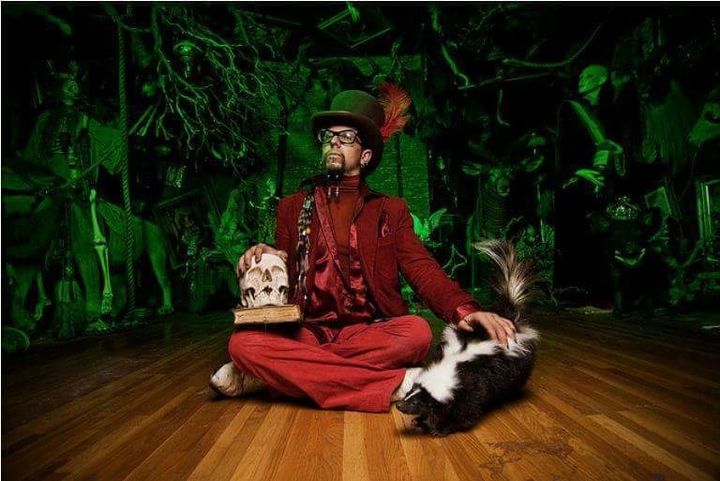
LACMA asked you to lead a group tour - how entrenched are you in the world of Guillermo del Toro? You are a well-known figure in the field of macabre art and art history - this opportunity seemed like a match made in heaven (or hell).
Dr. Paul Koudounaris: I’m not entrenched in his world at all, to be honest. From the brief interaction I’ve had with him I realized he’s one of the nicest, smartest guys you’ll ever meet, but I am not in any way in his orbit. LACMA brought me in to write part of the catalog, initially I guess assuming that since my previous published work was about death, and they were projecting a room with the theme of death for the exhibit, (and they did create one, it’s the last room), I would choose that as a topic. But when I came in to meet with Britt Salveson, the curator, I looked at the big board they had with images for the show and told her I would prefer to write about the history of monsters. The story of monsters is really the story of transformation, sometimes inner, sometimes outer, and that’s really a main theme to Guillermo’s films, and an underlying theme that I think, unifies the entire show. It’s better to have someone who isn’t closely affiliated with an artist work on their show. or write about their work. If you get people who are too close to the subject, you can get hero worship.
Why were you the right man to do this tour? What was the reaction from the attendees?
Koudounaris: In the first place, I’m a really big ham but good public speaker, so I think those qualities combined with the fact that I had written part of the catalog (more than) likely made me a good candidate. Plus I’m local. Thomas Kuntz, who has some work in the exhibition, is also leading a tour of it at some point, although obviously his will be very different than mine. Most of the attendees were extremely happy they had gone through on that tour, and most also said they intend to now go back again. There is so much material, and the presentation is so open-ended, you could probably go through five times and see it as a different show every time, focusing on different objects or themes. People were glad to have gone through first with me pointing out certain themes, giving some anecdotes, and basically creating a context. It’s a show that really warrants multiple visits, in my opinion.

What do you think is the most fascinating facet of this exhibition?
Koudounaris: The the way the show is put together. I always tell people, a museum show is just a collection of objects until the preparatory staff comes along and arranges it all for the viewer and creates meaning. The usual way to do that is to create some kind of teleology: one thing leads to another, leads to another, etc., and just tidy it all up. With a filmmaker, that is usually done by arranging the show according to the chronology of their films. LACMA avoided that, because the truth is that this a show not about the filmmaker’s films, but about the culture that shaped him, and that he in turn has shaped with his work. They kept it extremely open-ended, with seemingly countless areas of intersection and crossover. In theory, it’s arranged by themes assigned to each room, but even those are somewhat loosely applied. So high and low, old and new, authentic and reproduction all intersect in this show and manage to live harmoniously, without discrimination. And [while] the bulk of the show is from del Toro’s personal collection, they also brought in many things from other collections to help flesh out certain themes and ideas. The feeling you get is that it must have been a real labor of love for the people who put it all together.
Tell us a bit about the chapter you wrote for the book, and how that came to be in the first place.
Koudounaris: I wrote about the history of the way monsters were perceived. Britt Salvesen had contacted me with the expectation that I would probably want to write about death, but as soon as I looked at the material I realized monsters were much more relevant. They’ve been with us for almost all of history, as far back as Greek and Roman times, when it was part of what amounted to xenophobic, racist doctrine that was quite prevalent in the Ancient World. Basically, the theory was, Athens or Rome was the center of civilization, (depending on who you talked to) and that’s where everything was right―morally, intellectually, and physically ― that represented perfection. And the farther away you went, the more corrupt people became. So if you went all the way to India, or deep into Africa, you could find people with the heads of dogs, or one giant foot that they would hop around on, or legs like a goat. The Christians picked up on this too, and if anything they made it worse because they decided that if you were physically different or inferior, it must be a sign from God that you had been cursed. These were horrible times for people who were physically different―they could be shunned. Sometimes if a woman had a “monstrous” birth, she would be stoned to death, since it was assumed that God had sent the deformed child as a symbol of the mother’s sin. Anyway, it’s a long history, but things slowly did change, and by the nineteenth century a new discourse emerged that essentially made way for the modern monsters we know: Frankenstein’s monster, Quasimodo, Jekyll and Hyde; they’re all characters that invite a certain sympathy. That came as the product of Romanticism, which often sought inspiration in dark or neglected subject matter, combined with the idea of the noble savage, the theory that maybe we really aren’t all that great at the center of civilization, maybe civilization itself is corrupting and kind of monstrous, so maybe the people outside of it possess special virtue that we have lost.
How would you define beauty in the grotesque? A lot of people might appreciate Del Toro’s show, but some might find it hard to understand how or why this should be in a museum.
Koudounaris: Beauty, of course, is a very cagey topic. If a person decides that what they’re looking for in art is sheer beauty, well okay, maybe they’re better off looking Bouguereau paintings or some such. But most people now are looking for expression and inspiration, and they find beauty in those topics more readily than in simply pictorial qualities. And that’s where the beauty in this show largely lies. These things that are strange and maybe even sometimes neglected, yet exotic and compelling; and when confronted by them, they have the ability to move us. I wouldn’t really call it a “beautiful” show, though, I would call it “awesome” and “marvelous.”
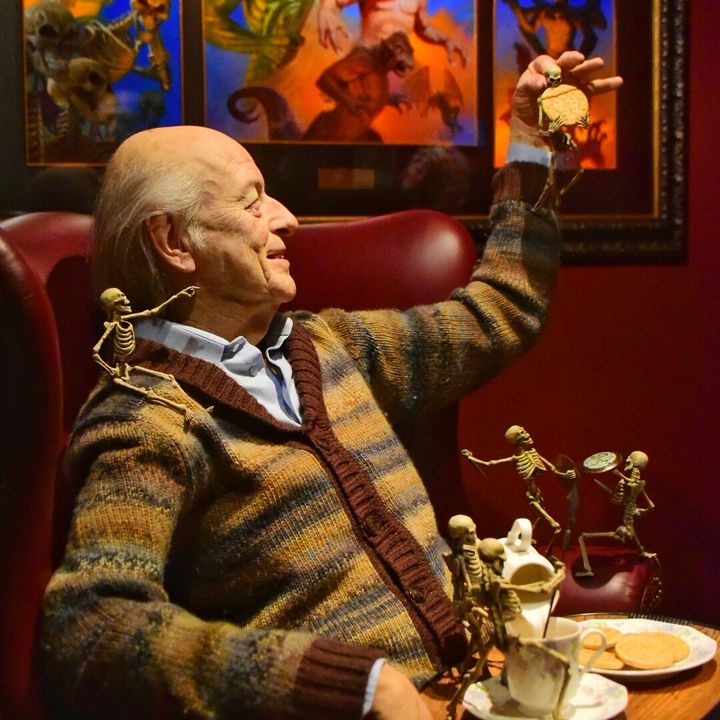
In literal terms: the show doesn’t really excite the viewer by beauty, but by create a sense of awe or wonder, by surrounding the viewer with what appear to be marvels. By presenting a culture and doing it in a way that emphasizes as I said earlier, the “awesome” and “marvelous,” gives so much to people who aren’t even fans of Guillermo del Toro, or invested in horror/monster culture. Because you’re awed, you’re surrounded by marvels―and who doesn’t want that sensation?
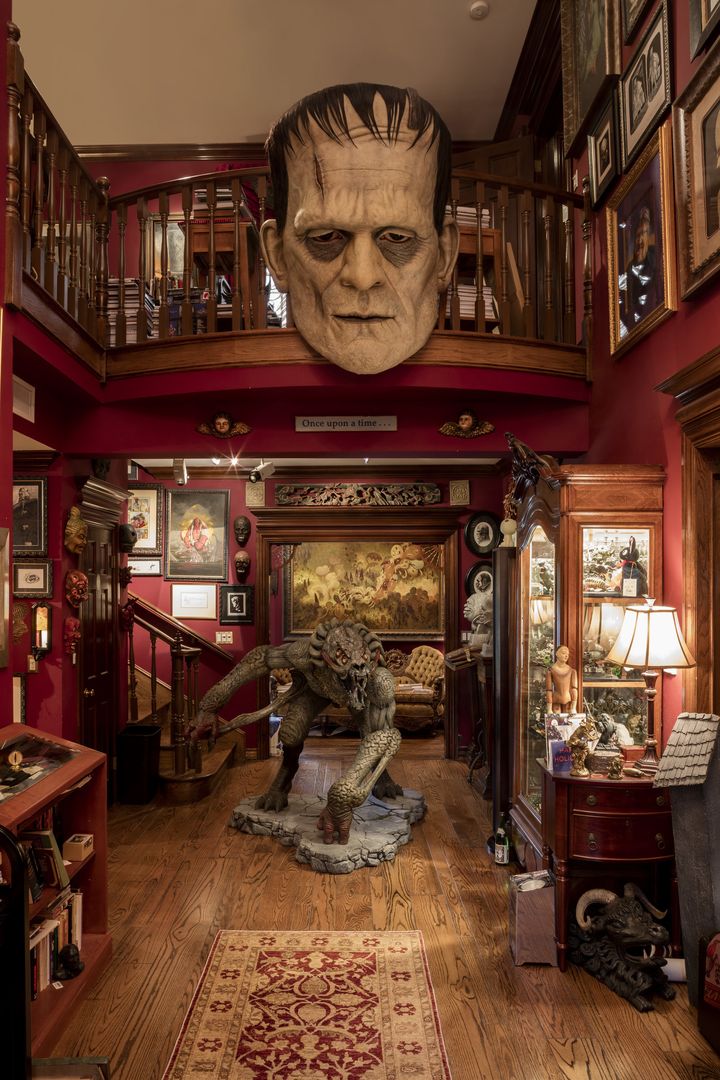
What is the pivotal piece in this exhibition that you really relate to?
Koudounaris: There is a giant head of Frankenstein’s monster, sculpted by Mike Hill. It’s absolutely fantastic, and it comes from Bleak House (the house where GdT keeps all this stuff) and it’s the first thing you see when you walk in. It sits over the entrance, high up on a railing, and it’s designed to be the size and have the impact of seeing the film originally in a theater in he 1930s. I started my essay with it because it simultaneously provides an introduction to both the collection and GdT himself. But that being said, I think everyone who goes through is going to pick out something totally different, and if they go more than once they’ll pick out something different each time. As I have said, it’s that kind of show. To me, that show isn’t about providing a climactic, eureka moment where something might find a particular piece that sums things up, it’s really a show designed to provide an changing experience.
What’s up next for you, career-wise? You recently went to Romania, and then there’s your beautiful books, like The Empire of Death and Memento Mori.
Koudounaris: Well . . . I don’t really work on the death stuff anymore. I’ll never be totally free of it, because it has a great personal interest to me. Recently in Romania I went to photograph painted skulls in a monastery and I have absolutely no professional use for them right now... I went just because they were there. I have been working on a lot of animal-related stuff over the past couple years.
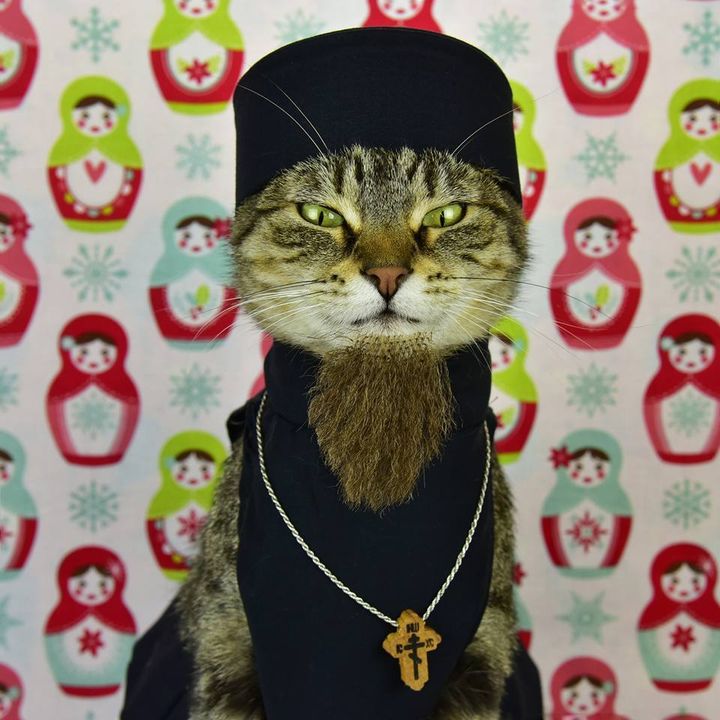
I have a portrait series of caricatures with my cat, who has pretty much become my muse at this point, and all the lectures I do now are about obscure animal history: ship cats, psychic dogs, and so on. We write history from a very human point of view, which is I suppose is only natural, but we then overlook the amazing contributions animals have made. It’s not a big stretch to say that the French might have lost at Verdun were it not for the efforts of an extremely heroic dog, cowboys were once riding around in the west with cats on their saddles, and Rin Tin Tin won the first Oscar for best actor―although they Academy decided they could not give it to a dog and had the votes retabulated and the award was subsequently given to a human. But we tend to forget all this stuff. I really like bringing it all back in; animal history is truly an amazing topic.
For more information on Paul Koudounaris, click here.
For more information on the exhibition Guillermo del Toro: At Home with Monsters at the Los Angeles County Museum of Art, click here.
